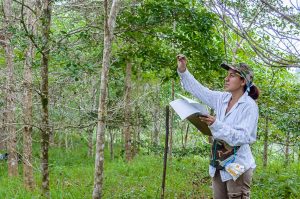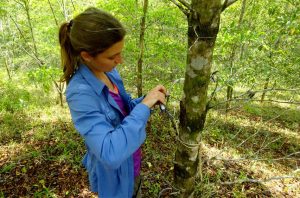Seeking Win-Win Solutions in Land Management
Despite the best efforts of conservationists and policy makers we continue to lose tropical forests. The Earth’s human population passed the 7 billion mark in 2011 and is expected to reach 11 billion this century. An ever- increasing human population will be forced to rely on dwindling forests for the goods and environmental services they provide. Stress on forested land will undoubtedly be exacerbated by climate change.
SMART REFORESTATION® is the process by which land is managed to maximize the flow of different goods and services for the benefit of multiple stakeholders in response to global change. At the landscape scale, efficient yet practical land use planning is needed so that different areas are appropriately allocated for reforestation, sustainable agriculture, urbanization, protected areas, and other land uses that optimize the different ecosystem services derived from the landscape mosaic. At more local scales, it goes beyond sound land use planning to include the intelligent use of tree species for reforestation and agroforestry systems that enhance forest-related ecosystem services while reducing the negative impacts of unsustainable land use.
The Smithsonian Tropical Research Institute has pioneered a variety of SMART REFORESTATION® research projects. In the Agua Salud project http://www.ctfs.si.edu/aguasalud/, a long-term field program within the Panama Canal Watershed, STRI researchers are studying the ecosystem services provided by forests and how they vary with land use and climate change. Native tree species plantations within the Agua Salud Project are designed to gain a mechanistic understanding of how tree species selected for particular attributes or traits interact and how these interactions affect stand productivity, as well as carbon, nutrient, and water cycles. Better understanding of tree interactions will afford better tree species choices in reforestation and restoration, and take us beyond well-intentioned but risky trial and error reforestation efforts.
| How to download and use this E-book: |
| Cómo descargar y utilizar el libro interactivo: |
| Download the printable PDF version Descargar la versión PDF imprimible |
|
|
|
At the landscape scale STRI researchers undertake biological inventories and assess ecosystem services within different areas of the Panama Canal Watershed to inform land use planning and policies. Recent efforts include assessing the biodiversity value of the ARGOS cement company tree plantations, including the extent to which they may serve as part of a biological corridor linking Soberania and Chagres National Parks.

